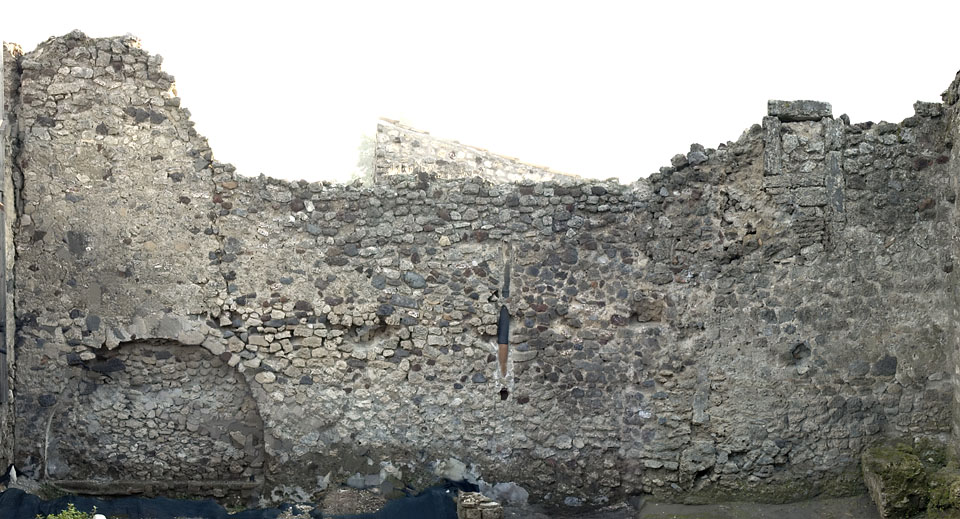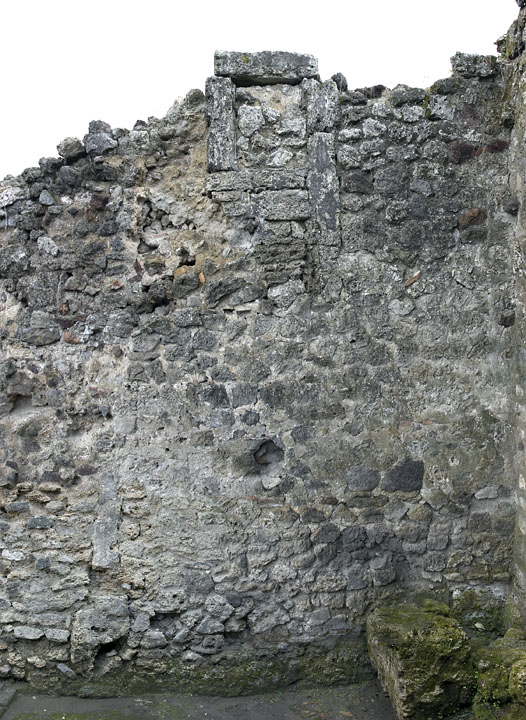East Wall
Description
Henrik Boman & Monika Nilsson
The east wall is built in opus incertum, predominantly with limestone set in earth mortar with lime pellets, but also with a few lava, cruma and tufa. Spoils, like fragments of tile and cocciopesto, have also been used for the wall construction. Near its northern end are two upright limestone blocks placed one above the other.
A cutting, 0.38 wide and 0.20m high, is found 1.90m above the threshold. Presumably, the cutting functioned as support for the door lintel.
There are two types of plaster on the wall. A sample from the worn plaster traces on the upper limestone block is of an early date, type C, whereas the plaster preserved along the floor is a type H, i.e. of a late date.
The wall is preserved to a great height and, yet, shows no signs of an upper floor. There is, however, a closed window, framed with limestone boulders, facing the peristyle of Casa degli Epigrammi greci at a high level. The window frame has preserved plaster of type C on all four interior sides.
The fact that the window originally opened to the area of the peristyle of the neighbouring house indicates an earlier relationship between the two houses.
It would appear that the E wall was raised later than the S wall. Probable binding stones protrude from the corner, at level with the filled-in window. These could be signs of either an earlier wall or that the house has settled, possibly in an earthquake which moved the position of the walls.
A cavity under the bottom limestone block contained loose soil with a concentration of finds. There were 17 tesserae in both black and white, eggshell fragments, three sea shells, and numerous, probably modern, snails. It is not clear whether the context is ancient or modern; one should bear in mind that the room was part of the post-WW II dumping grounds of the house.


